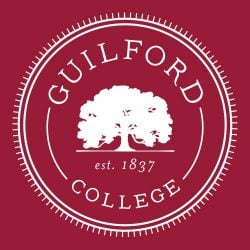Admissions should pay more attention to diversity, first years

Whether it was in the Cafeteria on the quad or even in your dorm, it was hard to miss the 500 students who were on campus on April 9 and 10 for Spring Into Guilford, the annual event where high school seniors from across the country have the chance to stay overnight, take mock classes and attend college events.
“We had a higher attendance than we did last year, which is really good,” said tour guide coordinator and senior Jocelyn Foshay. “It was packed, especially the overnight portion, which is what I look at. We had most of the people show up.”
Even so, there are still ways we could improve the recruitment process on campus.
In the office of admissions, for one thing, there is very little diversity in terms of race, gender and interests.
“We have mostly people from North Carolina, so one type of diversity we could be looking for is people who aren’t just from North Carolina,” said admissions receptionist and sophomore Hayden Young. “People working in admissions are primarily white people or white-passing people.”
Of the 34 full-time tour guides and tour guides in training, 22 are white and 12 are people of color.
In hiring tour guides and admissions counselors, the College should be more thoughtful about representation.
“As of right now, all of the admissions counselor positions have been filled, so we aren’t looking for anyone new, but when that process starts again, (we can) try to encourage that search committee to look for people of color to hire,” said Young.
In recent years, the admissions department has started paying more attention to diversity, but we are still struggling to bring in diverse students. Our student body largely reflects the tour guide population, which means that there is little opportunity for diverse students to see people like them.
According to College Factual, a website that calculates the percentage of diversity on college and university campuses, Guilford College is 62.7 percent white. The next largest group is black students at 22.4 percent. Additionally, 62 percent of students are from North Carolina.
If incoming students saw people who had something in common with them in admissions, it’s entirely possible we would start to see a shift in these numbers.
“It’s come to the forefront … when hiring people and looking at their backgrounds and looking at if they can connect with a bunch of different people with different backgrounds,” said tour guide coordinator and senior Allyson Quigley. “It’s being addressed, but I think it could be addressed a little bit better.”
Looking back, a more diverse staff would have made a difference for Young’s experience.
“I’d want to know that the person I’m talking to has a knowledge base of the student body and our students,” said Young. “If my admissions counselor was the main person I was talking to, I would’ve liked for him to be a person of color or at least be able to put me in touch with someone who’s a queer person of color.”
Additionally, admissions should be more connected with the first-year experience. As exciting as it is to get students to come here, we also want them to stay. This is especially true for athletics.
“Athletes, especially people who play a fall sport, that’s a really sticky thing,” said Foshay. “One of the things we try to do outside the admissions process is when you first get to campus, you build a community, (but) it’s hard when you’re on a sports team because it’s kind of given that you have that community, but then you never branch out.”
This is especially relevant because athletes are one of the most diverse groups on campus. In the past, athletic recruits had personalized tours through the athletics department, which meant they didn’t know a lot about other aspects of campus.
“Now, most of the athlete tours go through admissions, instead of athletics,” said Foshay.
All of this being said, there are many things that Guilford does incredibly well in terms of recruitment.
“I think Guilford does a great job personalizing the campus visiting experience,” said Foshay. “So when you go on tour, your tour guide wants to know who you are and wants to show you the parts of campus that will be really relevant for you.”
Additionally, making more of an effort toward diversity means perspective students get to see places like the Multicultural Education Department on their tours.
“Every tour guide is supposed to go back to the MED,” said Foshay. “It is not optional. It is part of the tour route.”
Every year, the recruitment process is evolving. I hope that we continue to focus more on diversity and inclusion when looking forward to the class of 2022.









Carly Stockwell • May 2, 2017 at 10:03 am
Interesting analysis! Here’s the link to the diversity statistics for Guildford College for your readers to examine in more detail: http://www.collegefactual.com/colleges/guilford-college/student-life/diversity/